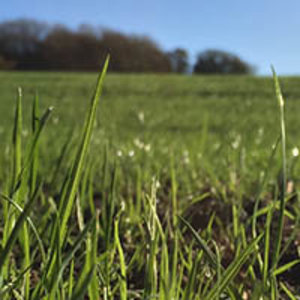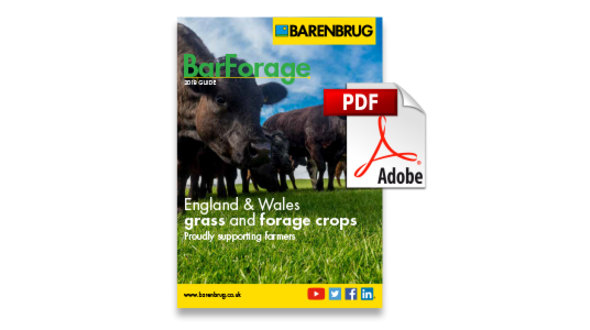New industry figures provide compelling reasons to reseed
Reseeding | Forage

Reseeding | Forage
Livestock farmers in two minds about whether or not to reseed their grass this autumn should check out latest industry figures, which provide compelling financial reasons for investing in a new sward for next spring – that’s the advice being offered by the agriculture team at Barenbrug UK.
Using new industry numbers, Barenbrug has calculated that farmers that don't reseed this autumn could be missing out on grass dry matter worth around £360 per hectare (ha) on a two-cut silage system. A sward established at the end of the 2017 grass-growing season has the potential (in 2018) to produce around 11.63 tonnes (t) of dry matter (DM) per ha from two cuts1. That’s around 2.6 tDM/ha more grass than an old field made up of 50% weed and 50% productive species, which would typically yield around 9 tDM/ha.
Costs are based on the assumption that DM is valued at £140/t and gains calculated do not take into account any additional cuts or autumn grazing that could increase yields further.

When it comes to energy the value of a reseed becomes even more convincing. The yield from two cuts of a new sward could have an equivalent energy value of 133,320MJ*1. That’s enough energy to produce 25,150 litres of milk; more than 2050 kg of lamb; or around 2400 kg of beef. With a new grass ley, cut at the optimum growth stage, a 72D silage with an ME of 11.5 should be easily achievable. In comparison, an old sward would have a D value of between 60-65D and ME levels of between 9.6 and 10.4. Compared to a new sward, that’s a potential energy loss of 43,320 MJ. In lost production and profit potential that equates to approximately:
8170 litres of milk – at 26.7 pence per (pp) litre (l) that’s >£2181*2
More than 785 kg of beef – at 364 pp/kg that’s >£2857*2
More than 665 kg lamb – at 461 pp/kg that’s >£3065*2.
New ryegrass swards will also use nitrogen (N) more efficiently. Ryegrass species are 100% N efficient while weed grasses such as annual meadow grass are only 17% efficient. This means that for every £100 of N applied to an old sward up to £83 could be wasted.
Mhairi Dawson, R&D Manager at Barenbrug UK, said: “Around the country we know there are lots of farmers who are cautious about reseeding. We appreciate this kind of work can feel like a major investment and a big decision for any farm business but when you look at the figures, they are incredibly persuasive. The outlay relating to a reseed can seem costly upfront but if you weigh up the gains to be had in terms of DM and milk and animal yields, it’s clear that there are compelling reasons for spending money on a new sward. If your grass is underperforming and has less than 50% of sown species, it’s far better to invest in some new seed rather than wasting money on fertiliser, which you would be feeding to weed grasses that have little or no nutritional value.”
Continuing, Mhairi said: “The key to maximising your return on grass is to make sure that soil is in tiptop condition before reseeding or overseeding. Even the very best performing ryegrasses cannot be expected to grow in soil that is sub-standard. Like any other crop, the first step when reseeding must be to make sure that soil structure, and phosphate (P), potash (K), N and pH levels are optimised for success.”
For grass to grow successfully, farmers should aim to maintain a soil pH of at least six or pH 6.5 where clover is sown. Indices of two for P and K are ideal. For more advice on how to optimise your grass or if you are facing a specific grassland management challenge, please contact the Barenbrug UK forage grass team. To help farmers grade their grass and work out a plan of action for achieving better swards, Barenbrug has devised a special field indexing system, which is simple and effective to use.
*1 Figure from 2017/18 Recommended Grass and Clover List *2 Figures from AHDB market reports and were up to date at time of printing (July 2017)

Discover more about our range of agricultural products and advice.